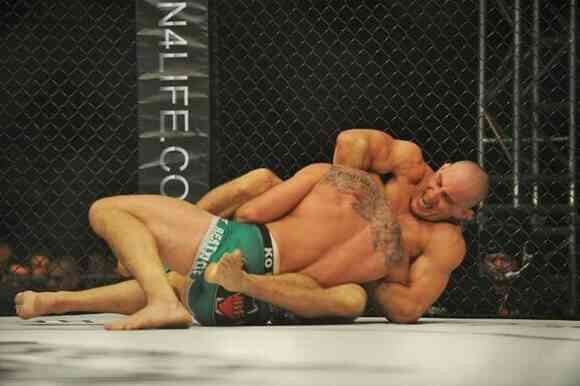Interval Cardiovascular Training Strategies for Wrestlers
Stamina is the name of the game when it comes to developing your strengths for wrestling. Superior strategy is excellent, if you can get to that point. Possessing a better bank of moves and knowing when to use them makes you a superior wrestler, unless you’re too tired to use them. Strength is great, but it only means a stronger man is getting pinned if you run out of gas. All of the great tools you use to be a successful wrestler are dependent upon a strong cardiovascular base. If you are able to develop one, you can win many matches by outlasting the competitor. Their strength, skills and strategy will erode as they grow tired, and yours will outshine theirs as a result.
While most wrestlers understand the importance of a strong cardiovascular base for maximum effectiveness on the mats, many fail to develop a versatile, balanced approach to building up their stamina. Usually, they revert to one practice: running. There is no denying the importance of running in a cardiovascular building program. However, running is impactful, burns a lot of calories, and does take a massive toll on the body. It should be used, but only in conjunction with other exercises to ensure you are developing maximum aerobic (lung) capacity with the least cost thrust upon your body. In other words, running too much can cost you strength and recovery ability, while hampering your training and skill efforts.
Wrestlers need to focus upon both short- and long-term bursts when completing their cardio. The art of the match is that it is both a sprint AND a marathon. You are up against other wrestlers for minutes at a time, so possessing a strong base with plenty of slow-twitch muscle fiber activation is important. On the other hand, the brief and intense exchanges between wrestlers in which you are using near-maximum levels of oxygen are similar to those required when panic sprinting. Beyond safely pushing yourself, you are often fighting for air, or at the very least fighting to stay off your back, while an opponent is doing the same. Your lungs need to be strong, and last as well.
Start your training with the stationary bike. Bring blood and oxygen to the lungs and lower body. After a 5 to 7 minute warm up, you will want to complete intervals. Pedal for 30 seconds “all out”, then pedal lightly for 15 seconds. Your legs and lungs will have a chance to recover a bit, but your heart rate will remain elevated. Complete ten of these intervals.
Running is essential for wrestlers, and that will come next. Find your spot on the track, field or court. Sprint for ten yards. walk ten yards. Sprint 20 yards. Walk ten yards. Sprint 30 yards. Walk ten yards. Repeat for ten intervals until you have maxed out at your final 100 yard spring. Then, you will want to exasperate your results with a brief 5 to 7 minute job to lower your heart rate and maximize the stamina gains.
At this point, you can rest or return for skill training via drills. Many wrestlers will opt for swimming training, as it delivers a very low-impact means for adding stamina, and often provides some therapeutic results to the athlete whose body may be hurting after all of that training. Your swimming intervals would be the same – Push yourself for one length, then paddle back, catching your breath. This sort of interval training helps to activate the slow-twitch muscle fibers (endurance) as well as the fast-twitch variety (short brief massive exercise moments). As discussed, both of these are imperative for wrestling cardiovascular training.
Record your daily cardio performance training in a journal. Document your times and set/repetitions. Over time, you will need to increase your training workload in order to ensure you are still making progress. The body adapts quickly and will no longer show stamina gains once you halt the progressively greater workouts. Train a little harder each time using interval cardio training, and you’ll be the last man standing as the strength, skills, stamina and strategy of your opponents fall by the wayside!





